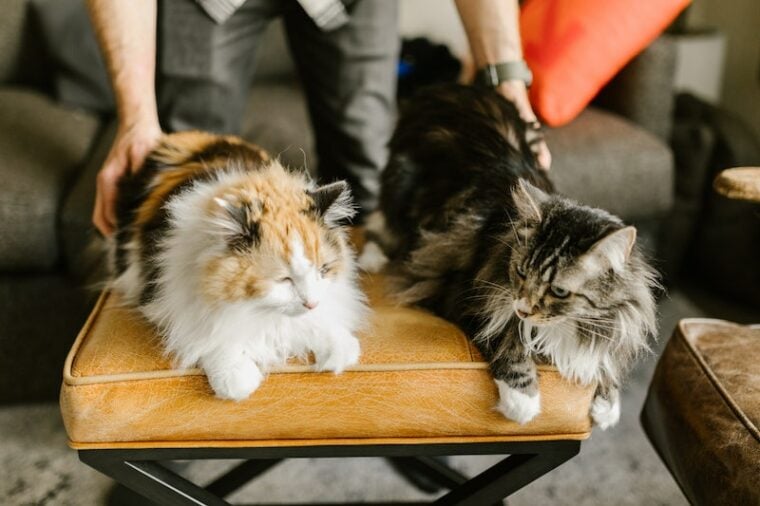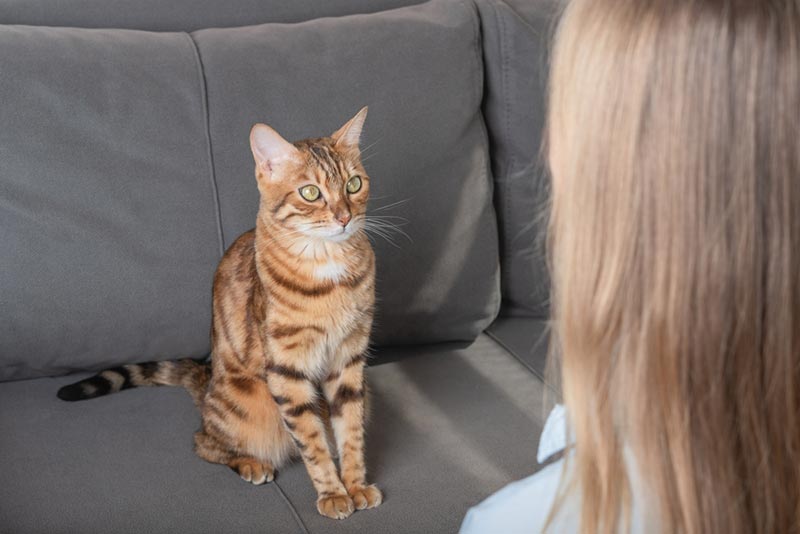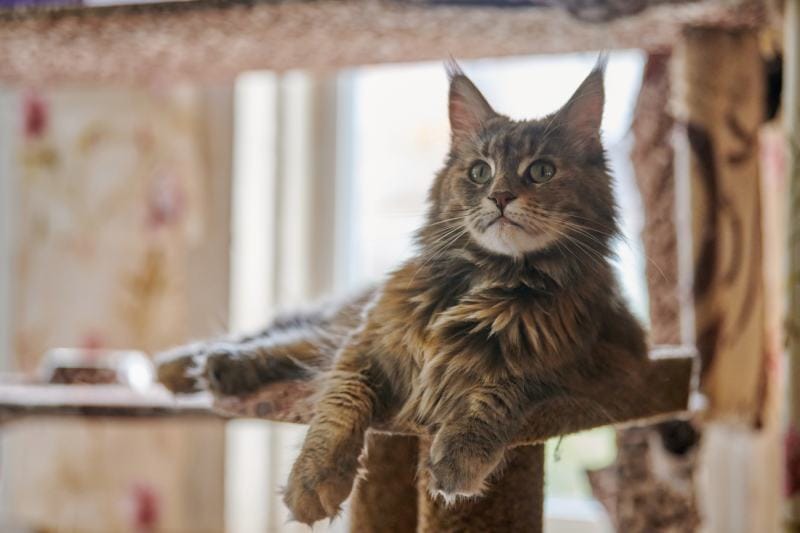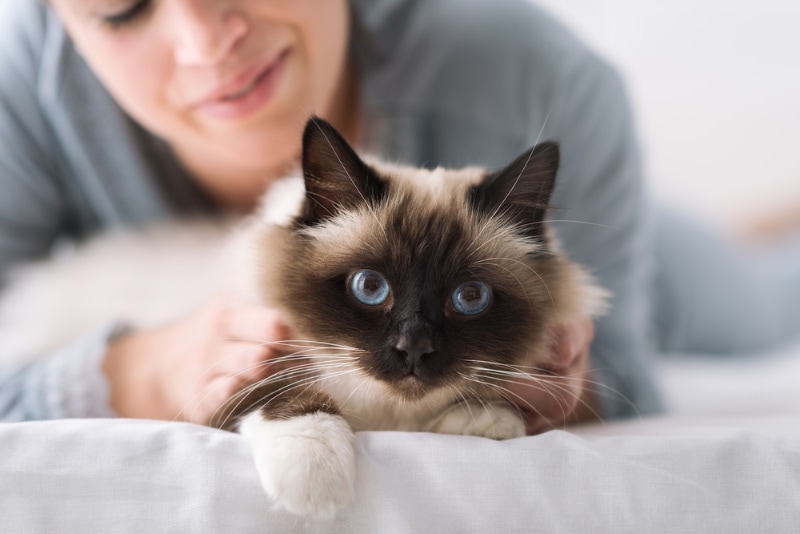
Everyone knows all about different dog breeds. Dogs are much more associated with individual breeds than cats are. However, there are dozens of different breeds of cats, and each breed is different from one another just like dogs. So how do you know what cat breed is right for you? You need to consider what you want out of a cat and your personal household before making a decision.
Once you go through all of the different factors that you should consider before settling on a cat breed, you can do some research and find a breed that is perfect for you. There are even helpful tools online that will compile your preferences and suggest specific breeds based on your answers. But before you do that, you need to know what the answers to those questions will be.
Here are eight tips on how to choose the right cat breed for you.
How to Choose the Right Cat Breed
1. Evaluate Your Living Situation
The first thing you should do before settling on a cat breed is to evaluate your personal living situation. How many people are in the house? Are kids or other pets involved? Do you have room for a litter box? Do you spend a lot of time at home or a lot of time on the road? These questions are imperative. Some cat breeds are better with kids and pets than others. Some cat breeds are perfectly fine being left alone for hours or days at a time, while others are not. Large breed cats might feel cramped or obnoxious in a small apartment. The first step towards picking the perfect cat is to do a quick overview of your overall living situation.

2. Outdoor or Indoor or Both?
Do you want an indoor cat or an outdoor cat? Indoor cats are very common, but they run the risk of running away or being scared of strangers or other cats if left isolated inside for too long. Outdoor cats are fun, but they have the risk of disappearing and not coming home, and you have to be prepared for that. Do you have property where a cat can safely roam nearby the house without disturbing the neighbors and the local wildlife? Outdoor cats also run the risk of getting parasites or getting into fights with other cats, which you will have to factor into your plan for medical treatment. Some cats are happy being let outside every once in a while but are also content to spend most of their time inside, which might be a happy middle ground.
3. Size and Appearance
The next thing you want to consider is how you want your cat to look. Do you enjoy large cats with a lot of weight or lean and petite cats? Some cats are extremely large, like Maine Coon cats which can weigh up to 10 lbs. or more. Other popular breeds, like Siamese cats, are much smaller. Large cats eat more, produce more waste, and if they have long hair, they shed more. But large cats do have a striking appearance that appeals to many.

4. Consider A Cat’s Shedding
Speaking of shedding, cats shed a lot of hair. If you are allergic to cats or hate dust, you will definitely want to consider short hair cat breeds. There are short hair breeds and long hair breeds. Long-haired cats have much thicker and longer fur. When these cats shed, they produce a higher volume of loose hair and, therefore, more allergies and associated particles. If you want a long-haired cat, you should check to make sure no one in your household has allergies related to cats. You will also have to consider grooming. Even though they keep themselves well-groomed, long-haired cats have the possibility of needing extra grooming due to their coats.
5. Spend Time with Cats to Gain Some Experience
If you don’t really know how different cats act and behave, you should try and spend some time with cats to get more familiar with the species. There are various ways to do this. You can go to the local shelter and talk to the people there. Most shelters are more than happy to let you see the animals and spend time with them to see if you are a good fit. You can visit cat cafes. These new businesses allow you to sip coffee and play with cats. You can also ask your friends and family about their cats to see what they like or dislike about their particular cat. The more you know, the better informed you will be to make a decision that is right for you.
6. Some Cats Are More Independent Than Others
Some cats are very independent and can be left alone if you do not want to deal with them. Outdoor cats are very independent. Other breeds that are independent are British Shorthair, American Wirehair, and Persian cats. These cats can be left alone and will leave you alone if you work from home or are busy with children. Other cats, like Siamese cats, will need you to pet them, sit with them, and pay attention to them a lot more often. Needy cats that do not get enough stimulation can become a nuisance as they will bother you, meow, and sit on you when you don’t particularly want them to.
If a cat that follows you around, meows when it sees you, and will sit on you at every opportunity sounds nice, you will want an affectionate cat. If you want a cat that will leave you alone and is content to be left alone during short trips, and doesn’t need constant attention, you will want to find a more independent cat.

7. Playful vs. Chill
Some cats are extremely playful and energetic. These cats will need a lot of play time or a lot of appropriate stimulation. Energetic and playful cats will need teasers, cat trees, and plenty of exercise. If playful cats do not get the proper stimulation, they can take it out by shredding your furniture and your shoes or even trying to play with you while you sleep. Energetic breeds include cats like Abyssinians, Bengals, and Savannah cats. Chill cats will be more content to nap the day away than play. Chill cats include Persians, Siberians, and Russian blue cats. Pick a cat breed that will fit your living situation and your personal preferences and energy levels.
8. Don’t Be Afraid to Ask Questions
If you are unsure about how cats behave or what a certain type of cat will entail, do not be afraid to ask questions. You can ask cat breeders questions about their specific breeds. You can ask your veterinarian about their experiences with certain cat breeds. You can also ask the workers at the local shelter what they think about some of the cats they have seen in the shelter. Knowledge is power. And you do not want to accidentally choose a breed that is going to be a bad fit for you.
Conclusion
These tips and considerations will help you narrow down a cat breed that will fit your life perfectly. Cat breeds are very different. Perhaps you want a sleek outdoor cat that can live in your shed and large yard. Or maybe you want a fat lazy cat with long luscious hair that you can pet all day. These two types of cats are very different and will likely require very different breeds to fit your personality just right.
Featured Image Credit: RODNAE Productions, Pexels







